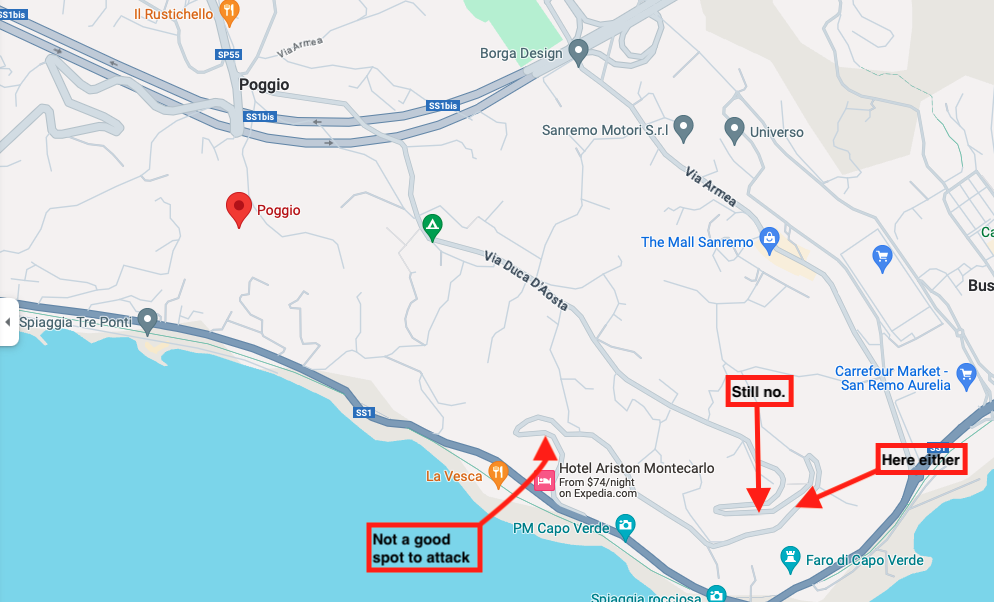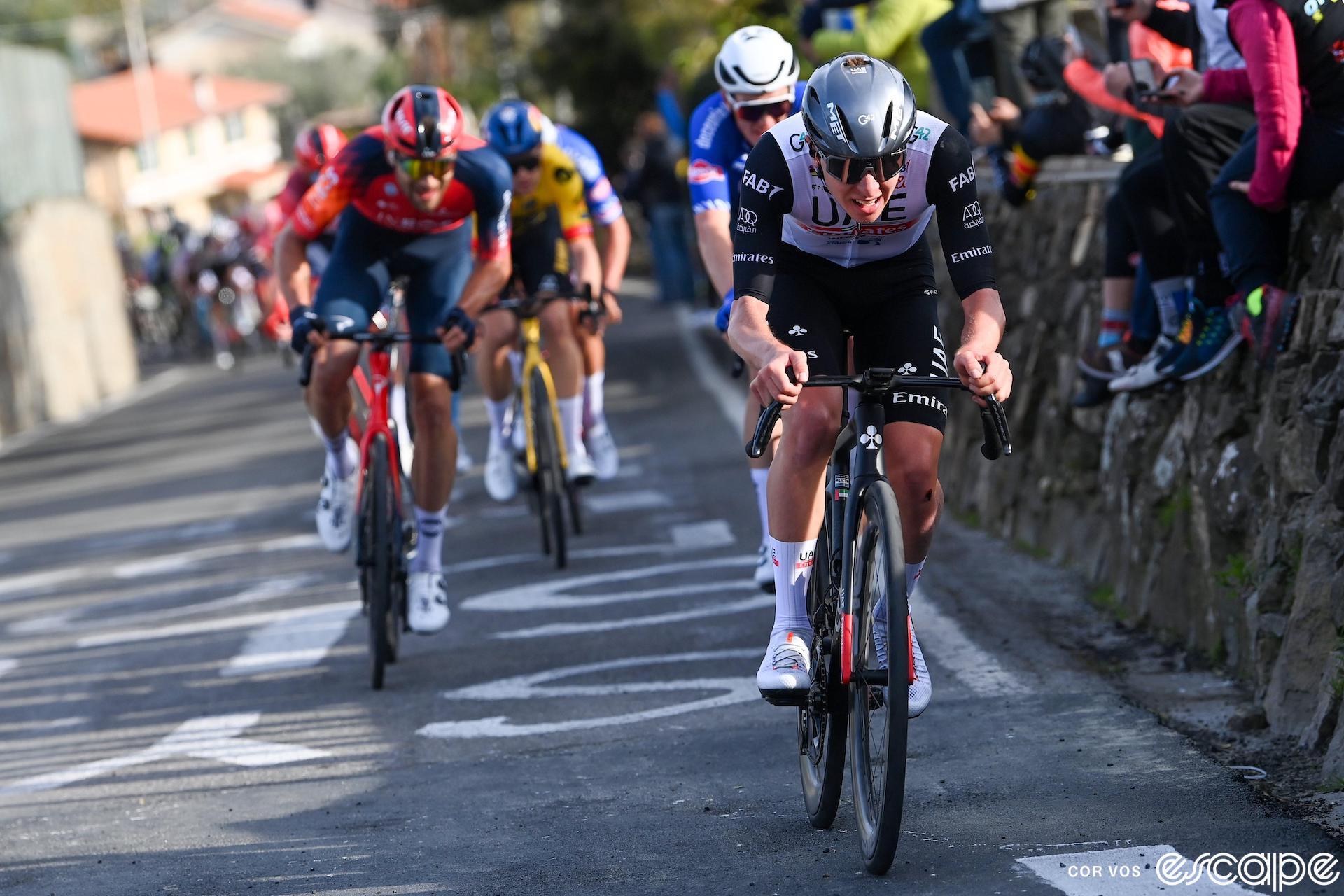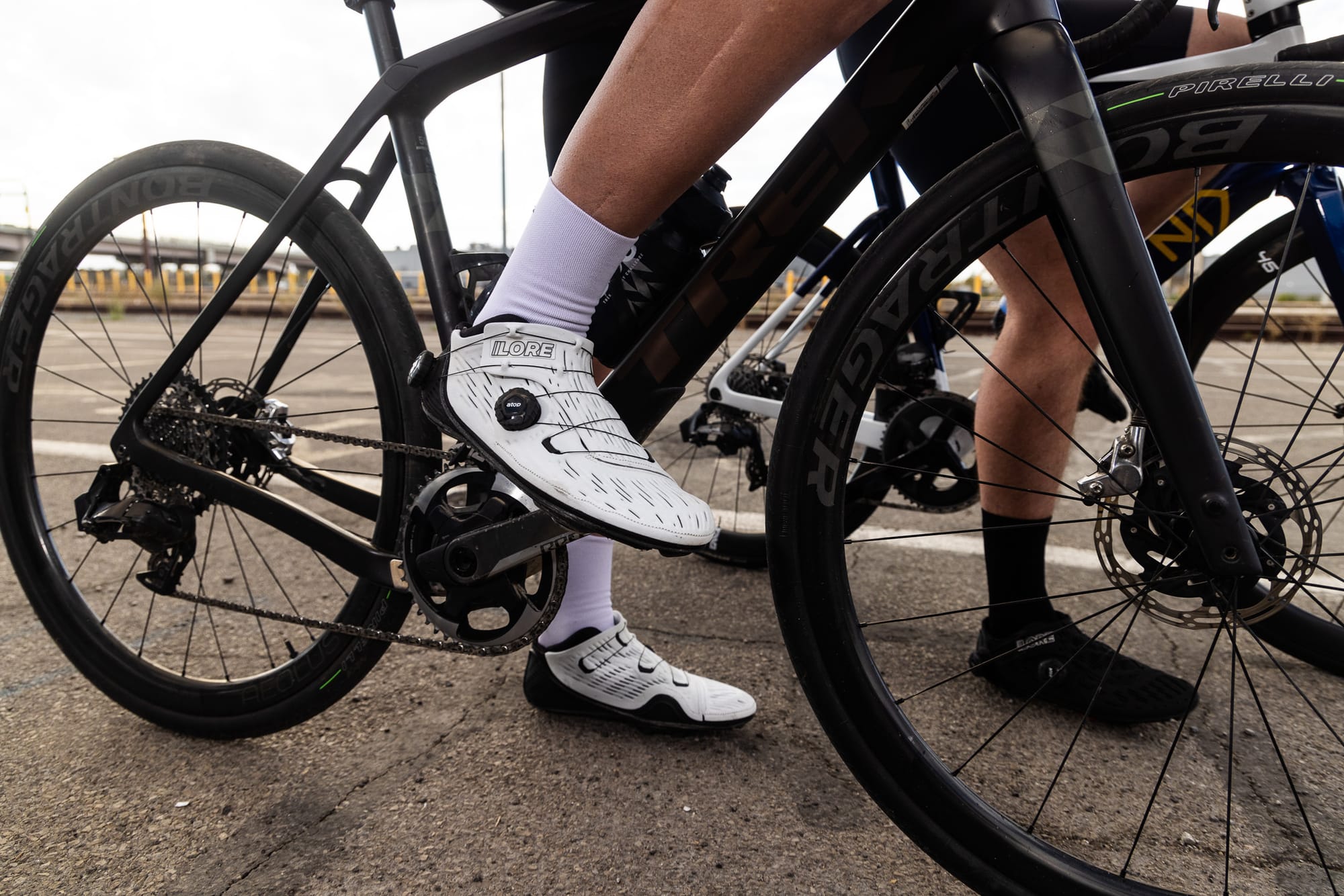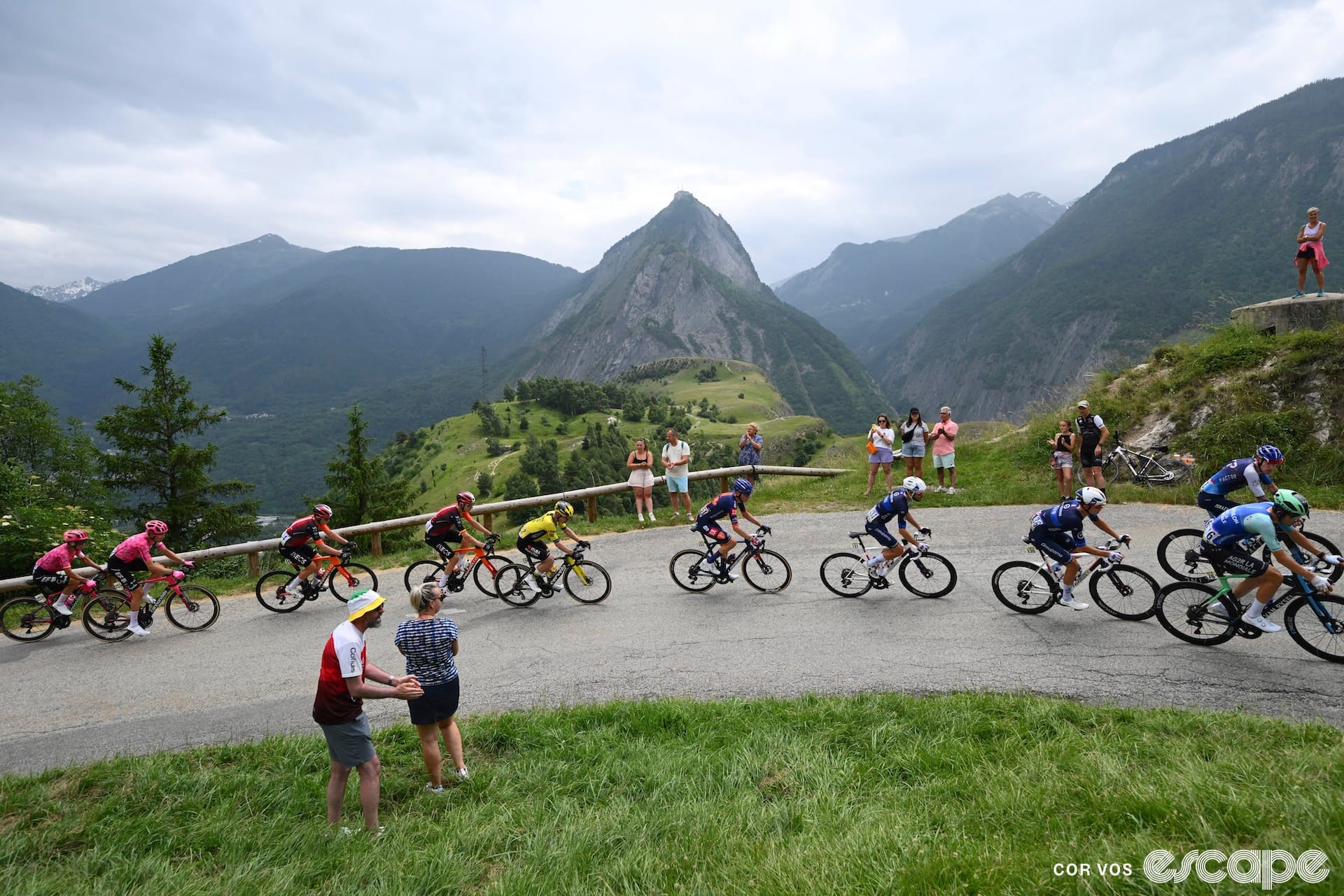Tadej Pogačar is calling his shot again. Or, rather, his director is.
Two weeks after the Slovenian went HAM on Strade Bianche, launching a solo attack 80 km from the finish at exactly the spot – the Colle Sante Marie – that he said in pre-race comments he would attack, Pogačar’s director at UAE Team Emirates told GCN that the race might see aggression well before the usually pivotal Poggio.
“For me, the secret here is riding the Cipressa in under nine minutes,” Joxean Fernandez told GCN. The goal would not necessarily be to spring Pogačar free for his fourth different Monument, but to string out the field and reduce the competition heading into the Poggio.
As Fernandez pointed out, the 2023 edition clocked the Cipressa in a leisurely near-10 minutes, which saw 70 riders hit the Poggio together. The year before, when Davide Formolo pushed the Cipressa pace to 9:30, the pack at the base of the Poggio was a far more manageable 27 riders. Since positioning on the Poggio is key, having less traffic helps riders use less energy to stay up front. In a nearly 300 km race, keeping some reservoir for explosive efforts is vital.
UAE isn’t the only team in the race expecting early aggression. “Attacks on the Cipressa won’t surprise me this year to be honest,” said Ineos Grenadiers' Tom Pidcock.
If Pidcock and Fernandez are right, that could turn “the most exciting 20 minutes in bike racing” into the most exciting hour.
Many ways to win, and lose
But it’s not quite that simple, of course. UAE isn’t talking about a long-range solo move by Pogačar (which would be amazing but would also possibly suck all the oxygen out of what is already a race that usually unfolds in a pretty pro forma way until the final climb).
They’re talking about setup for the Poggio. And here, I have to point out that UAE races the Poggio in a Very Dumb Way. The thing most people notice about the Poggio is that it is not long enough (3.7 km) or steep enough (3.7%) to burn riders off the wheel. That’s not strictly true, especially after almost 300 km of racing. What people – including UAE, apparently – notice less about the Poggio is that it has turns.

Switchbacks, in fact. On a not-so-steep climb, that’s a vital tactical consideration. Last year, the average speed on the Poggio was 37.6 km/h. When a rider like Pogačar attacks, as he did three times in 2022, he’s moving well in excess of 45 km/h. And when you attack into a switchback, as he did twice that year, you have to slow down.
Same basic thing happened in 2023, when Tim Wellens launched a hard acceleration at 8 km to go, 200 meters before the first switchback.
In both instances, the race promptly came right back together as the attackers/pacemakers have to slow for the two switchbacks. When moves go clear on the Poggio, they go clear late, on the straighter sections up top, where even a small gap can be pushed on the descent, where switchbacks are a confident rider’s friend. Last year, Mathieu van der Poel went clear just 100 meters from the summit. In 2022, winner Matej Mohorič wasn’t even in the lead group over the top.
A Cipressa selection is great, but it's still all about the Poggio
As Fernandez pointed out, Milan-San Remo is the most tactical of all the Monuments; it’s not just about surviving 300 km of racing as fresh as you can, or who has the best one- or five-minute power on the Poggio. It’s about where you apply that.
To date, UAE hasn’t done a super smart job of that. It’s well and good to plan to reduce the field by pushing the pace on the Cipressa, but what that ultimately means is you’re down to 15-20 riders who all are effectively good bets to win the race, simply because they made that selection.
Positioning does matter to some extent but it’s worth noting that both of the previous winners were not in the top 10 riders until late on the Poggio. Last year, Van der Poel even waited for Wout van Aert to close down Pogačar’s final attack, sitting on the wheel and biding his time rather than jumping around. To me, the lesson is clear: Milan-San Remo is a race that is best won with patience and one blistering, well-timed attack. It can’t come too early, and it absolutely must not come at the wrong spot on the final climb.
If Pogačar wants that fourth Monument, he’d do well to remind Wellens – and himself – to look for daylight, not walls, before punching the accelerator.
Did we do a good job with this story?




